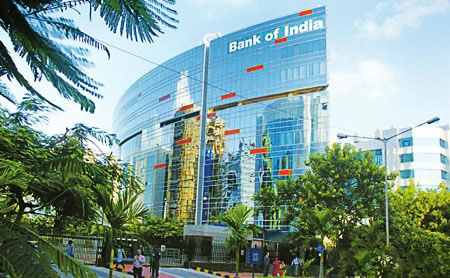印度国家银行品牌怎么样 申请店铺
外推网助力印度国家银行品牌出海!将品牌入驻外推网,定制印度国家银行品牌推广信息,可以显著提高印度国家银行产品曝光,简直是跨境电商爆单神器!目前仅需1000元/年哦~

印度银行是由印度政府出资设立的该国最大的商业银行,其中政府出资比例61.58%。印度国家银行在全球34个国家拥有180家分支机构,资产超过3592亿美元。现今的印度国家银行是通过1955印度国家法案合并而成的。前身印度帝国银行成立于1921年,由加尔各答银行(BankofCalcutta,1806)、孟买银行(BankofBombay,1840)和马德拉斯布银行(BankofMadras,1843)组成。拥有着非常完善银行体制的印度国家银行始从于19世纪,至今为止已超过200多年。
随着印度整个国家在50年代的发展,银行更加致力于农村发展和公共部门工业的发展。印度国家银行在60和70年代通过农业融资集中于发展投资商和支持绿色革命的机械上。在80年代,银行集中于发展国际贸易而扩展了整个国内和国际的网络。解除繁琐的管制和加大银行的自由度为我们整个银行机制在90年代面临市场竞争铺下了道路,同时也争取到了很多国际外汇储备。印度国家银行增加了市场融资,并且在承担一定基础风险下扩大了个人投资度。现今,整个银行凝结自身,努力将其转化为一个百分之百以计算机处理且执行银行核心解决方案。
在现今这个世界上很少有哪个金融机构能够像印度国家银行这样有着古老和权威气质。银行的其中的一个优势是能够适应世界的变化以及及时处理所需的问题。并且很少违反银行的法规法则,或是背离银行规定去延续或扩展其业务。
从上世纪20年代开始,印度银行业经历了一番大整合。其中,最著名的,是1921年在英国殖民当局的要求下,加尔各答银行(BankofCalcutta,1806)、孟买银行(BankofBombay,1840)和马德拉斯布银行(BankofMadras,1843)合并产生了印度帝国银行。这便是如今该国最大的商业银行———印度国家银行的前身。1955年,独立后的尼赫鲁政府发起了国化运动,形成了现今的印度国家银行。
印度独立后,随着全国经济在上世纪50年代的高速发展,国家银行开始致力于农村发展和公共部门工业的发展;在60和70年代,该行通过农业融资集中于发展投资商和支持绿色革命的机械方面;在80年代,则集中于发展国际贸易,扩展整个国内和国际的商业网络;在90年代,繁琐管制的解除和银行自由度的加大,使得整个银行走向了市场竞争,并且在承担一定基础风险下扩大了自营投资度。
印度的商业银行按所有权性质划分,有国有化银行、公共银行和私人银行。其中,主要是印度国家银行及其7家附属银行和14家国有化银行。这些银行业务范围广,业务量大,加上公共银行,存款额占到90%左右。印度国家银行是最大的商业银行。早在1983年已居世界100家大商业银行第78位。其前身是1921年成立的皇家银行,1955年印度政府对其实行国有化,并与10家邦银行合并,改名印度国家银行。1960年,印度政府又将7家邦银行变为该行附属银行。该行可经营全面的银行业务。经办出口中长期信贷,买方和卖方信贷,并办理印度政府与外国政府间贸易协定的清算业务。在设有印度储备银行分支机构的地区,由其代理中央银行职能。印度对外银行业务的1/3由该行办理,在加尔各答、孟买、新德里、孟都拉斯设有分行,办理对外投资、出口信贷、咨询等业务。随着银行业趋向国际化,印度国家银行在世界一些重要城市设立分支机构,分布在伦敦、纽约、洛杉矶、多伦多、芝加哥、开罗、香港、东京、莫斯科等地,海外代理行达2000多家。印度国家银行的管理机构是董事会,负责向政府及中央银行提交资产负债表等业务报告。
The Bank of India is the largest commercial bank in the country, which is funded by the government of India, with 61.58% of which is funded by the government. The National Bank of India has 180 branches in 34 countries with assets of more than 359.2 billion US dollars. Today's National Bank of India is formed through the merger of the Indian state act of 1955. The former Imperial Bank of India was founded in 1921, which is composed of Bank of Calcutta (1806), Bank of Bombay (1840) and Bank of Madras (1843). The National Bank of India, with a very perfect banking system, began in the 19th century and has been more than 200 years so far. With the development of the whole country in the 1950s, banks are more committed to rural development and the development of public sector industry. In the 1960s and 1970s, the National Bank of India focused on developing investors and supporting green revolution machinery through agricultural financing. In the 1980s, banks focused on the development of international trade and expanded the entire domestic and international network. Removing the tedious control and increasing the freedom of banks pave the way for our whole banking mechanism to face the market competition in the 1990s, and at the same time, we have won a lot of international foreign exchange reserves. The National Bank of India increased market financing and increased personal investment under certain basic risks. Today, the whole bank condenses itself and tries to transform it into a 100% computer-based core solution for banks. In today's world, few financial institutions can be as old and authoritative as the National Bank of India. One of the advantages of banks is that they can adapt to the changes of the world and deal with the problems in time. And rarely violate the laws and regulations of the bank, or deviate from the regulations of the bank to continue or expand its business. Since the 1920s, India's banking industry has experienced a great integration. Among them, the most famous one was the merger of Bank of Calcutta (1806), Bank of Bombay (1840) and Bank of Madras (1843) in 1921 at the request of the British colonial authorities, which resulted in the formation of the Imperial Bank of India. This is now the predecessor of the largest commercial bank in the country, the National Bank of India. In 1955, after independence, the Nehru government launched the nationalization movement and formed the current National Bank of India. After India's independence, with the rapid development of the national economy in the 1950s, the National Bank began to focus on rural development and the development of public sector industry; in the 1960s and 1970s, the bank focused on the development of investors and machinery to support the green revolution through agricultural financing; in the 1980s, it focused on the development of international trade and the expansion of the entire domestic and international business network; in the 1990s In the s, with the deregulation and the increase of bank freedom, the whole bank entered the market competition and expanded its self investment under certain basic risks. India's commercial banks are divided by the nature of ownership, including nationalized banks, public banks and private banks. Among them, the National Bank of India and its seven affiliated banks and 14 nationalized banks are the main ones. These banks have a wide range of business and a large volume of business. Together with public banks, deposits account for about 90%. The National Bank of India is the largest commercial bank. As early as 1983, it ranked 78th among the world's 100 largest commercial banks. Its predecessor was the Royal Bank established in 1921. In 1955, the Indian government nationalized it and merged it with 10 state banks to change its name to the National Bank of India. In 1960, the Indian government changed seven state banks into affiliated banks. The bank can carry on a comprehensive banking business. Handle medium and long term export credit, buyer's and seller's credit, and handle the clearing business of trade agreements between the government of India and foreign governments. In areas with branches of the Reserve Bank of India, it acts as the acting central bank. One third of India's foreign banking business is handled by the bank, with branches in Kolkata, Mumbai, New Delhi and menduras to handle foreign investment, export credit, consulting and other businesses. With the internationalization of banking industry, the National Bank of India has set up branches in some important cities in the world, which are distributed in London, New York, Los Angeles, Toronto, Chicago, Cairo, Hong Kong, Tokyo, Moscow and other places, with more than 2000 overseas agent banks. The governing body of the National Bank of India is the board of directors, which is responsible for submitting business reports such as balance sheets to the government and the central bank.
本文链接: https://brand.waitui.com/95576f236.html 联系电话:请联系客服添加 联系邮箱:请联系客服添加


















 浙公网安备 33011802001999号
浙公网安备 33011802001999号
